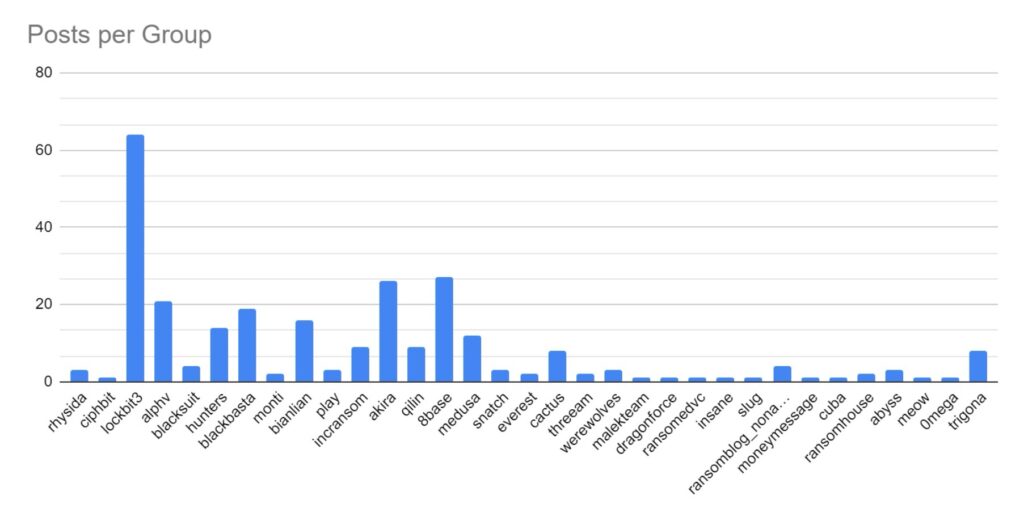This weekly blog post is from via our unique intelligence collection pipelines. We are your eyes and ears online, including the Dark Web.
There are thousands of vulnerability discussions each week. SOS Intelligence gathers a list of the most discussed Common Vulnerabilities and Exposures (CVE) online for the previous week.
We make every effort to ensure the accuracy of the data presented. As this is an automated process some errors may creep in.
If you are feeling generous please do make us aware of anything you spot, feel free to follow us on Twitter @sosintel and DM us. Thank you!
1. CVE-2023-1671
A pre-auth command injection vulnerability in the warn-proceed handler of Sophos Web Appliance older than version 4.3.10.4 allows execution of arbitrary code.
https://nvd.nist.gov/vuln/detail/CVE-2023-1671
2. CVE-2023-7101
Spreadsheet::ParseExcel version 0.65 is a Perl module used for parsing Excel files. Spreadsheet::ParseExcel is vulnerable to an arbitrary code execution (ACE) vulnerability due to passing unvalidated input from a file into a string-type “eval”. Specifically, the issue stems from the evaluation of Number format strings (not to be confused with printf-style format strings) within the Excel parsing logic.
https://nvd.nist.gov/vuln/detail/CVE-2023-7101
3. CVE-2023-34048
vCenter Server contains an out-of-bounds write vulnerability in the implementation of the DCERPC protocol. A malicious actor with network access to vCenter Server may trigger an out-of-bounds write potentially leading to remote code execution.
https://nvd.nist.gov/vuln/detail/CVE-2023-34048
4. CVE-2023-42917
A memory corruption vulnerability was addressed with improved locking. This issue is fixed in iOS 17.1.2 and iPadOS 17.1.2, macOS Sonoma 14.1.2, Safari 17.1.2. Processing web content may lead to arbitrary code execution. Apple is aware of a report that this issue may have been exploited against versions of iOS before iOS 16.7.1.
https://nvd.nist.gov/vuln/detail/CVE-2023-42917
5. CVE-2024-1512
The MasterStudy LMS WordPress Plugin – for Online Courses and Education plugin for WordPress is vulnerable to union based SQL Injection via the ‘user’ parameter of the /lms/stm-lms/order/items REST route in all versions up to, and including, 3.2.5 due to insufficient escaping on the user supplied parameter and lack of sufficient preparation on the existing SQL query. This makes it possible for unauthenticated attackers to append additional SQL queries into already existing queries that can be used to extract sensitive information from the database.
https://nvd.nist.gov/vuln/detail/CVE-2024-1512
6. CVE-2023-7024
Heap buffer overflow in WebRTC in Google Chrome prior to 120.0.6099.129 allowed a remote attacker to potentially exploit heap corruption via a crafted HTML page. (Chromium security severity: High)
https://nvd.nist.gov/vuln/detail/CVE-2023-7024
7. CVE-2020-13699
TeamViewer Desktop for Windows before 15.8.3 does not properly quote its custom URI handlers. A malicious website could launch TeamViewer with arbitrary parameters, as demonstrated by a teamviewer10: –play URL. An attacker could force a victim to send an NTLM authentication request and either relay the request or capture the hash for offline password cracking. This affects teamviewer10, teamviewer8, teamviewerapi, tvchat1, tvcontrol1, tvfiletransfer1, tvjoinv8, tvpresent1, tvsendfile1, tvsqcustomer1, tvsqsupport1, tvvideocall1, and tvvpn1. The issue is fixed in 8.0.258861, 9.0.258860, 10.0.258873, 11.0.258870, 12.0.258869, 13.2.36220, 14.2.56676, 14.7.48350, and 15.8.3.
https://nvd.nist.gov/vuln/detail/CVE-2020-13699
8. CVE-2024-21338
Windows Kernel Elevation of Privilege Vulnerability
https://nvd.nist.gov/vuln/detail/CVE-2024-21338
9. CVE-2020-1472
An elevation of privilege vulnerability exists when an attacker establishes a vulnerable Netlogon secure channel connection to a domain controller, using the Netlogon Remote Protocol (MS-NRPC). An attacker who successfully exploited the vulnerability could run a specially crafted application on a device on the network.
To exploit the vulnerability, an unauthenticated attacker would be required to use MS-NRPC to connect to a domain controller to obtain domain administrator access.
Microsoft is addressing the vulnerability in a phased two-part rollout. These updates address the vulnerability by modifying how Netlogon handles the usage of Netlogon secure channels.
For guidelines on how to manage the changes required for this vulnerability and more information on the phased rollout, see How to manage the changes in Netlogon secure channel connections associated with CVE-2020-1472 (updated September 28, 2020).
When the second phase of Windows updates become available in Q1 2021, customers will be notified via a revision to this security vulnerability. If you wish to be notified when these updates are released, we recommend that you register for the security notifications mailer to be alerted of content changes to this advisory. See Microsoft Technical Security Notifications.
https://nvd.nist.gov/vuln/detail/CVE-2020-1472
10. CVE-2024-23222
A type confusion issue was addressed with improved checks. This issue is fixed in iOS 17.3 and iPadOS 17.3, macOS Sonoma 14.3, tvOS 17.3. Processing maliciously crafted web content may lead to arbitrary code execution. Apple is aware of a report that this issue may have been exploited.
https://nvd.nist.gov/vuln/detail/CVE-2024-23222












Recent Comments